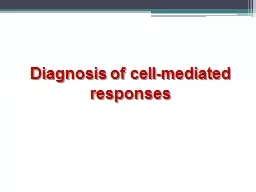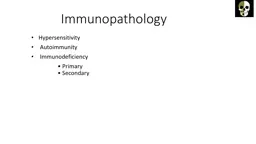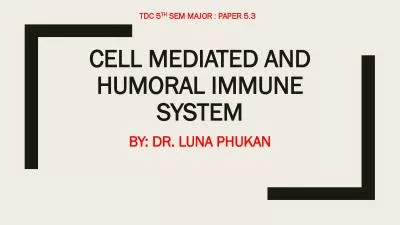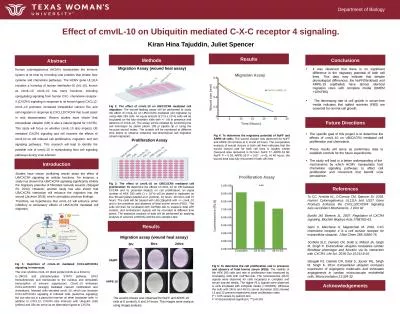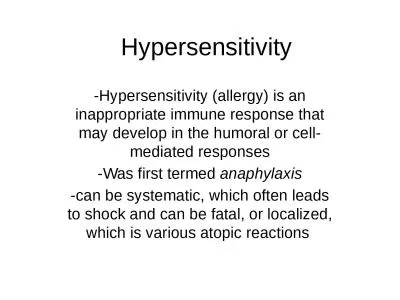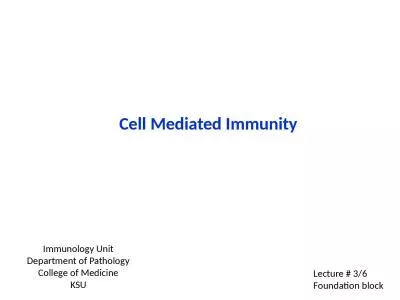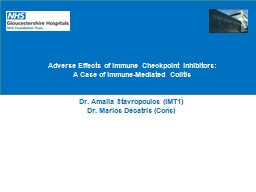PPT-Diagnosis of cell-mediated responses
Author : alexa-scheidler | Published Date : 2017-10-26
Diagnosis of cellmediated responses 1 Delayed hypersensitivity reactions Scratch skin test Intradermal skin test Patch test 2 Lymphocyte transformation test Lymphocyte
Presentation Embed Code
Download Presentation
Download Presentation The PPT/PDF document "Diagnosis of cell-mediated responses" is the property of its rightful owner. Permission is granted to download and print the materials on this website for personal, non-commercial use only, and to display it on your personal computer provided you do not modify the materials and that you retain all copyright notices contained in the materials. By downloading content from our website, you accept the terms of this agreement.
Diagnosis of cell-mediated responses: Transcript
Diagnosis of cellmediated responses 1 Delayed hypersensitivity reactions Scratch skin test Intradermal skin test Patch test 2 Lymphocyte transformation test Lymphocyte activation test. immunology. What is hypersensitivity?. the violent reaction of the immune system leading to severe symptoms and even death in . sensitised. animal when it is re-exposed to the same antigen for the second time. It is nothing but allergy.. Hypersensitivity. Autoimmunity. . Immunodeficiency . . • . Primary. • . Secondary . Hypersensitivity . In . hypersensitivity. , the . antigens . are not . destructive. , but the responses to them cause . By Peter Wickham. 1. MEd (TESOL) . University of Wollongong NSW Australia. BEd. Edith Cowan University WA Australia. 1974-7 & 1990-2004 . primary school teacher. , Australia. 1978-89 . field linguist . Murugan. , . M.Sc., . M.Phil.. , Ph.D.,. Assistant Professor and Principal . i/c. Department of Biochemistry,. Bharathidasan. University Model College,. Vedharanyam. - 614 810.. Antibody Mediated Effector Functions. golgi. transport and VAPB-mediated ER aggregation. By: Derek Prosser, . Duvinh. Tran, Pierre-Yves . Gougeon. , Carine . Verly. and Johnny K. . Ngsee. Translated By: Sohail Syed. Precursors. What is VAP?. L. . donovani. . senso. . lato. . in Lebanon . . Nuha . Nuwayri. . Salti,. a. #*. . Yasir. AW . Skeiky,. b. †. . . Khouzama. . Knio. c. . #. . Address: Nuha . Nuwayri. . Salti. , MD.,. Professor of Medicine, Pharmacology, Microbiology, Immunology & Pathology. John A. Oates Chair in Clinical Research. Vanderbilt University Medical Centre. . 2018 Annual Meeting of the Tennessee Society of Anesthesiologists. HUMORAL IMMUNE SYSTEM BY: DR. LUNA PHUKAN TDC 5 TH SEM MAJOR : PAPER 5.3 CELL MEDIATED IMMUNE SYSTEM Cell - mediated immune responses involve the destruction of infected cells by cytotoxic T cell Kiran Hina Tajuddin, Juliet Spencer. Abstract. Methods. Results. Conclusions. Human cytomegalovirus (HCMV) manipulates the immune system of its host by encoding viral proteins that imitate host cytokine and chemokine pathways. The HCMV gene UL111A encodes a homolog of human interleukin-10 (hIL-10), known as cmvIL-10. cmvIL-10 has many functions, including upregulating signaling from human CXC- chemokine receptor-4 (CXCR4) signaling in response to its known ligand CXCL12. cmvIL-10 promotes increased intracellular calcium flux and cell migration in response to CXCL12/CXCR4 that could assist in viral dissemination. Recent studies have shown that extracellular ubiquitin (UB) is also a natural ligand for CXCR4. This study will focus on whether cmvIL-10 also impacts UB mediated CXCR4 signaling and will examine the effects of cmvIl-10 on UB induced cell proliferation, migration, and cell signaling pathways. This research will lead to identify the possible role of cmvIL-10 in manipulating host cell signaling pathways during virus infection. An Introduction. What is Gene Transfection?. Generation of genetically modified animals. Genetic modification of germ cells. Breeding modified individuals. To combine gene cutting or expression tools. Boushehr. medical university. C. linical Manifestations of Food Allergy. IgE. -MEDIATED REACTIONS. Rapid . in . onset (typically . beginning within minutes to two hours from the time of . ingestion). -Was first termed . anaphylaxis. -can be systematic, which often leads to shock and can be fatal, or localized, which is various atopic reactions . Types of Reactions. There are four types of reactions. Department of Pathology. College of . Medicine. KSU. Lecture # 3/6. Foundation block. Teaching objectives. To describe antigen recognition by. T cells. . To describe the pathways involved in processing endogenous and exogenous . A Case of Immune-Mediated Colitis. Dr. Amalia Stavropoulos (IMT1). Dr. Marios Decatris (Cons). Case Presentation. A 61-year-old woman with recurrent malignant melanoma. Currently undergoing . combination ICI-therapy:.
Download Document
Here is the link to download the presentation.
"Diagnosis of cell-mediated responses"The content belongs to its owner. You may download and print it for personal use, without modification, and keep all copyright notices. By downloading, you agree to these terms.
Related Documents

